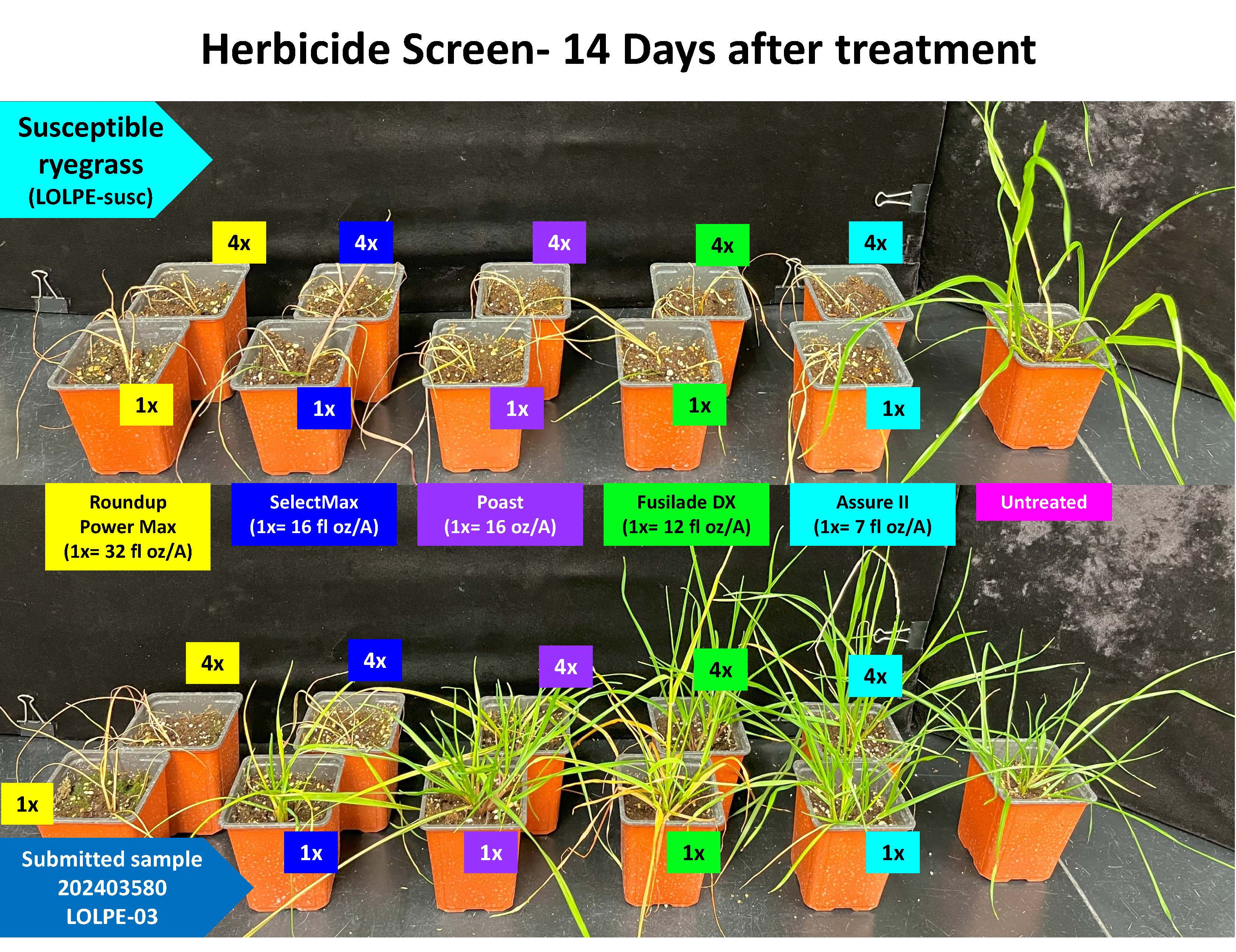2025 Status of herbicide-resistant weeds in Michigan
Each year, new herbicide resistance cases are confirmed by MSU Plant & Pest Diagnostics.

In fall 2024, Michigan State University (MSU) Plant & Pest Diagnostics received nine weed samples to screen for herbicide resistance. All but one of the samples were from rotations including soybeans and were funded by the Michigan Soybean Committee. For more than a decade, the Michigan Soybean Committee has provided ongoing support for the screening of select weed species for herbicide resistance that are found growing in soybean rotations (i.e., pigweeds, ragweeds, marestail/horseweed, and common lambsquarters).
The nine samples included two redroot pigweed, four waterhemp, one common lambsquarters, one common ragweed and one ryegrass. No herbicide resistance issues were found in the redroot pigweed and common lambsquarters submitted samples, despite testing seven different herbicide site of action groups.
The common ragweed sample from Ingham County tested positive for resistance to glyphosate and the acetolactate synthase (ALS) inhibiting herbicides. This is the first confirmation of multiple-resistant common ragweed for the county.
The waterhemp samples submitted were all suspected to be resistant to the synthetic auxin herbicide 2,4-D. Of the four samples, only one was confirmed resistant to 2,4-D. This sample was submitted from Sanilac County. This sample was also resistant to glyphosate. None of the waterhemp samples were resistant to dicamba, another synthetic auxin herbicide. This is the first known confirmation of 2,4-D resistance in waterhemp from Michigan, therefore additional testing is being conducted to determine the level of 2,4-D resistance in this sample.
The other three waterhemp samples were glyphosate resistant. Two of these were from Gratiot County and the final one was from Saginaw County. The sample from Saginaw County was both glyphosate and ALS resistant. These resistance issues have been previously confirmed in other areas of these counties.
Finally, a ryegrass sample (perennial or Italian, not confirmed) from Hillsdale County was found to be resistant to all grass herbicide active ingredients screened (i.e., clethodim, sethoxydim, fluazifop and quizalofop). This is another first case for Michigan.

To view a map and summary of all herbicide resistance cases confirmed by MSU, please visit the Plant & Pest Diagnostics’ Herbicide Resistant Weeds in Michigan website.
Herbicide resistance testing will again be available in the fall of 2025. Fully mature seeds are needed for these screens, with most annual species expected to have mature seeds starting in mid-September through frost. All submissions are due by mid-November 2025. Information on these supported programs, fees for other types of samples and the submission process can be found on the MSU Plant & Pest Diagnostics website or in the back of the 2025 Weed Control Guide for Field Crops (E-434). Information and photos showing how to collect seeds for the bioassays is available in “Tips for collecting weed seeds: Ensure your resistance sample gets tested.”
Please note that submissions not covered by the Michigan Soybean Committee as described above are subject to a $90 fee for in-state samples and a $180 fee for samples submitted from outside of Michigan. If you have any questions regarding the 2024 results or future sample submissions, please contact Erin Hill at hiller12@msu.edu for more information.
Thank you to Christy Sprague for reviewing this article.
New county locations and/or incidents of resistance confirmed from 2024
*G# refers to the herbicide site of action group
Waterhemp
- Multiple resistant (2,4-D-G#4 + glyphosate-G#9): Sanilac
Common ragweed
- Multiple resistant (ALS-G#2 + glyphosate-G#9): Ingham
Ryegrass
- ACCase resistance (G#1): Hillsdale



 Print
Print Email
Email




